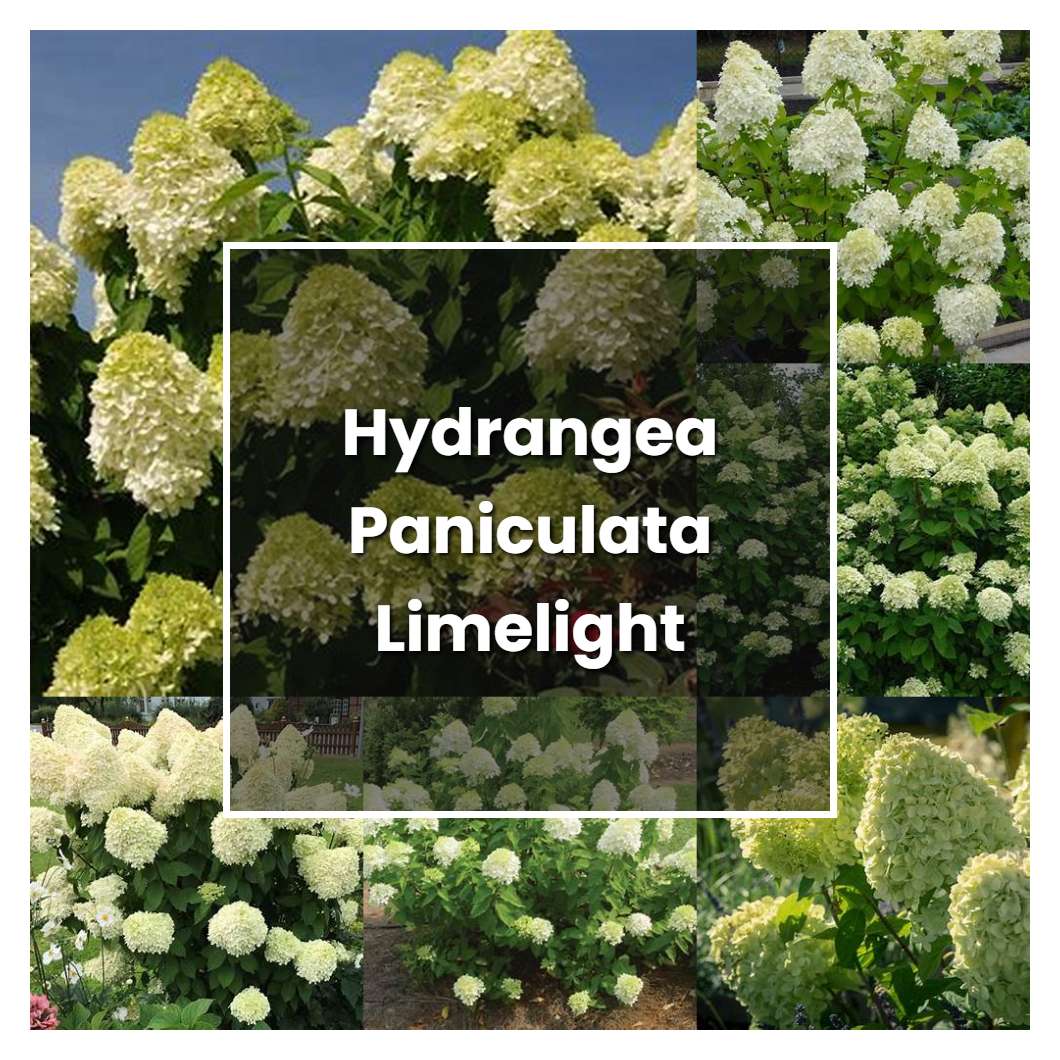Hydrangea paniculata limelight is a deciduous shrub that is native to China and Japan. It is a member of the hydrangea family and is closely related to the Hydrangea macrophylla. The plant grows to a height of 3-4 meters and has large, dark green leaves. The flowers are white and appear in clusters at the end of the branches. The blooming period is from June to September.

Related plant:
Hydrangea Paniculata Diamant Rouge
Related plant:
Peegee Hydrangea
About soil condition, hydrangea paniculata limelight prefers acidic to neutral soils with a pH of 4.5 to 7.0, but it is adaptable to other soil types as long as they are well-drained. The plant is generally tolerant of average to poor soils, but it will not thrive in wet or heavy clay soils.
Not too different with other hydrangeas, the paniculata hydrangea shrub thrives in full sun to partial shade conditions. It will produce the most flowers in full sun, but it will also do well in partial shade, especially in hot summer climates. If you live in an area with very hot summers, you may want to give your paniculata hydrangea some afternoon shade to protect it from the harsh afternoon sun.
The temperature condition for hydrangea paniculata limelight is cool to warm. They prefer full sun to partial shade and will tolerate almost any soil type as long as it is well-drained. They are drought tolerant once established.
Ideal humidity condition for this plant is 50% If the humidity is too low, the leaves will start to curl and the flowers will wilt. If the humidity is too high, the leaves will start to yellow and the flowers will drop prematurely.
About fertilizer, usually the plant does not need much added fertilizer. You can add some compost or manure to the soil around the base of the plant in early spring. For potted plants, you can add some slow-release fertilizer to the potting mix. For best blooms, it's important to fertilize regularly and keep the soil moist but not soggy. To keep your plant healthy and promote strong growth, it's important to pay attention to the roots. Be sure to plant hydrangeas in well-drained soil and water regularly. If the roots are too wet, they can rot. If they are too dry, the plant will wilt. If you're not sure if the roots are getting enough water, you can check by gently digging around the base of the plant. The roots should be white and healthy-looking, not yellow or brown.
Pruning your hydrangea paniculata limelight is an important part of keeping your plant healthy and looking its best. Pruning should be done in late winter or early spring, before new growth begins. You can prune away any dead or dying branches, as well as any branches that are crossing or rubbing against each other. You can also cut back the plant by a third or more to encourage new growth and produce fuller, bushier plants.
Propagation is best done in late summer or early fall by rooting stem cuttings. Cuttings should be taken from new growth that is still green and supple. Cuttings should be 6-8 inches long and have at least 2-3 leaves. Strip the leaves from the bottom half of the cutting and dip the cut end into rooting hormone. Place the cuttings in a well-drained potting mix and keep moist. Cuttings should root within 4-6 weeks.
Usually, the plant growth rate is between 12 and 24 inches per year. This plant can grow in sun or shade and prefers moist, well-drained soil. It blooms from July to September and its flowers are white or pale pink.
Common problems for this kind of plant are pests and diseases. The most common pest is the aphid, which can cause the leaves to yellow and the plant to stunted growth. Aphids can be controlled with insecticidal soap or horticultural oil. The most common disease is powdery mildew, which can cause the leaves to turn white and the plant to lose its leaves. Powdery mildew can be controlled with a fungicide.
Source:
Hydrangea - University of Connecticut
General care for hydrangeas | OSU Extension Service
Hydrangea - extension.illinois.edu
